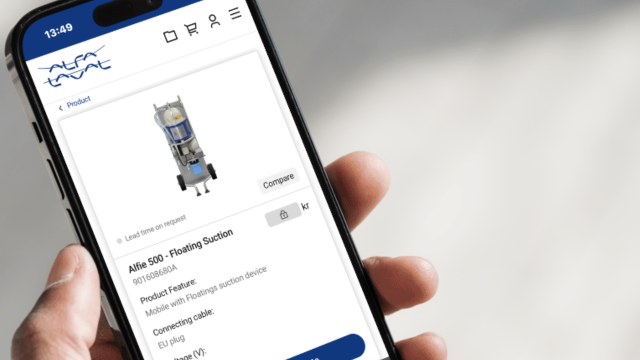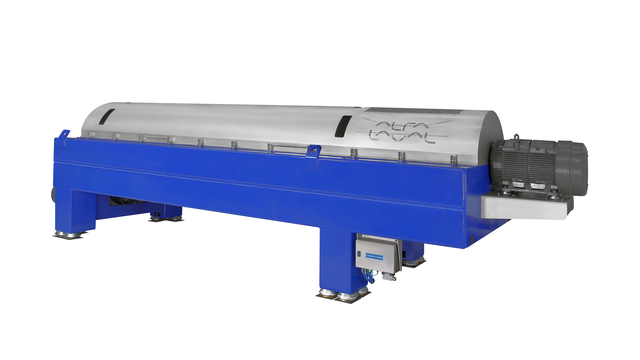LYNX
阿法拉伐 Lynx 离心机是石油、天然气和钻井行业固液分离过程中的关键组件,适用于重晶石回收和油泥处理等工艺。该设备专为高负荷运行和高回收率设计,适用于大流量进料,并配备了最先进的耐磨保护措施。此外,该设备还提供三相分离版本,可实现油、水和干固体的分离。
高性能卧螺离心机
- 在连续运行过程中,产品回收率达到无与伦比的水平
- 在市场上占用最小空间的同时,实现高容量
- 由于操作人员干预较少,劳动力成本较低
- 适用于任何恶劣环境
- 可靠且值得信赖的技术
Lynx 离心机可根据具体需求进行定制,提供先进耐磨保护、自动化控制及远程监控等选项。该设备可选择两相或三相设计。转鼓转速、转鼓内料池深度及进料速率均可调节,以确保最佳性能。我们还支持防爆等级 Zone 2 及 Zone 1 应用。
是什么让Lynx离心机与众不同?

FlightGuard
FlightGuard 耐磨保护系统由焊接在输送机上的耐磨板组成,
在高磨损应用环境中提供卓越的耐磨性能和更长的运行时间。

固体防护
360°出口设计,配备增强型可更换耐磨保护,适用于高磨蚀性介质,确保高运行时间。
 FeedGuard
FeedGuard
全封闭式FeedGuard进料区确保产品缓慢加速且扰动最小,从而降低磨损。FeedGuard设计在磨蚀性应用中提供卓越的可靠性和运行时间,同时支持现场快速更换,有效减少停机时间。
 EasyLift
EasyLift
该专利设计采用弹簧式铰链结构,即使是最重的盖板也能轻松用手打开。为维护和保养提供安全快捷的访问方式。
 PowerTubes
PowerTubes
可调节的出液口设计为沿旋转方向的切向释放液体。这支持碗的旋转,从而回收能量并最小化功率消耗。
Lynx 离心机的工作原理
阿法拉伐Lynx 离心机采用细长圆柱形转鼓,其长径比相对较大,且末端呈锥形。该转鼓以最高4000转/分钟的速度旋转(具体取决于型号),产生300至3574 G的离心力。其他关键组件包括主驱动电机、重型变速箱、反向驱动电机以及AL自动化解决方案。阿法拉伐独特的直接驱动变速箱确保了输送速度的自动控制。
液体被输送到长圆柱形碗中,离心力将其向外压,在碗壁上形成一层(称为池)。该层的厚度由圆柱段末端的系列排放堰决定。澄清后的液体在离心力的作用下从溢流堰流出。由于泥浆中的固体颗粒较重,它们会留在碗壁上,并通过螺旋输送机连续清除。这些固体随后被输送到锥形段(称为沙滩),并通过锥形段狭窄端部的排放口排出。清洁后的液体从另一端排出。
三相分离设计
在三相分离过程中,离心机配备有配对盘,通过泵和液位管的作用将轻相与重相分离。这使得您可以在同一操作中同时分离固体轻相和重相,无需添加额外步骤。
液-液分离
阿法拉伐Lynx卧螺离心机的特殊版本可用于液-液分离(例如油水分离),实现卧螺离心机前所未有的液体澄清度。通过在线相间调整功能(无需机械改动),可轻松优化分离液相的质量。
液相分离过程贯穿离心机碗体圆柱部分的整个长度,澄清后的重液相和轻液相通过不同组的液位管流出碗体。
访问我们的产品目录
阿法拉伐产品目录是一款易于使用的工具,可帮助您筛选、选择并报价最佳解决方案。进入在线目录,选择您所需的产品和配件。



